The Hurried Walkaround
This is a guest post by John Hill, who originally shared the story on the Professional Pilots Rumour Network. John’s been flying all his life and his story of a lessoned learned after a hurried walk-around is as intriguing as it is instructive. I hope you enjoy it as much as I did.
I’ve been mighty lucky in my flying life. Glider pilot at 16, PPL at 17 on a Tiger Moth, sponsored cadet with a legacy carrier in my early twenties, right seat of a big jet with 400 hours, and then the airline I worked for had a need for helicopter pilots and I was selected for rotary training.
My rotary instructor was a huge bear of a man called Jake Jackson. Ex-Colonel in the Army Air Corps who had lived a very charmed life, Jake insisted that his students applied the same high standards he did, happily using violence if he believed that the student’s standards were slack. His cry of “gently boy! Gently! Its’ like w***ing a hamster! If you don’t do it gently it’s f***ing messy!” as I learned the art of hovering still comes through my headset every time I pull power in a helicopter.
One hot summer day, I was sent out to get an aircraft started ready for Jake to join me. I can’t remember the exercise, I just remember Jake storming out to the aircraft, opening my door, yanking me out and nearly throttling me by my tie (training was so much more formal then) as he roundly criticised my walk-round.
Fast forward twenty years and you would find me on a beautiful summer Saturday evening parked at a landing zone on the England/Wales border. My job for the evening was to collect a regular customer and fly him in to Bristol to meet his jet so he could clear off to Barbados on holiday. The customer was well known in powerful circles, deliciously indiscreet, fun to be with and at one time had a PPL/H [private pilots licence for helicopters] so he liked to sit in the front with me and chat as we flew.
The helicopter was nearly brand new: it had only flown twenty hours on top of its test flying and acceptance flights, it was a very comfortable and capable IFR twin with eight passenger seats, great avionics, useful range and best of all, really comfortable, sheepskin-covered pilots’ seats.
The only slight snag was the weather, which although wonderful was due to deteriorate to OVC at 700′, viz about 2k* at base, which would be closed on arrival (I was on an out-of-hours indemnity) but I knew that following the NDB/DME profile for noise abatement would guarantee my arrival.
*[Overcast at 700 feet (low cloud) with visibility of two kilometres.]
Eventually, the customer finished his meeting and we left for Bristol as the daylight faded. Bristol ATC got me in with their usual efficiency and then it was a brisk left turn into the handling agents, land next to the jet, shut down and see the passenger away.
It was at this point that my evening started to go wrong. I needed fuel and the bowser was held up. Eventually (after an hour) it arrived and with the tanks topped to full I prepared to leave, to find the handling agent waving in front of me, he came up to the aircraft and told me my credit card had been refused (I had phoned ahead with the number to save time) and I would have to go into the office. In the office I found that the office staff had transposed two numbers; they swiped the card and the payment was made. I dashed back to the aircraft, now under pressure because my out of hours indemnity ended at midnight and I was going to be really pushed for time.
Rather than jump in and go, I quickly carried out a second walk round, looking at, pushing, pulling and waggling anything that could be looked at, pushed, pulled or waggled. Then I jumped into my seat and requested start and clearance to my base. Due to IFR inbounds, I was going to have to initially route southwest before turning back northeast, crossing the inbounds and picking up my route home.
Eventually airborne, I followed ATC’s instructions and after about ten minutes was heading northeast. The wind was almost calm and I could clearly see the inbound airliners, suddenly there was a huge thump of turbulence. I went light in my seat and the aircraft rolled forty degrees either side of upright. Guides and maps went everywhere and I heard a slight rattle. I had hit the wake of a Boeing 757 with his flaps down, which some of you may be aware has some of the worst wake turbulence ever.

I got my breath back as the aircraft settled back into the cruise, and shortly afterwards was transferred to RAF Brize Norton Control Zone for transit. While crossing Brize a “new aircraft snag” cropped up. I was constantly having to increase power as the collective* kept gently lowering itself and the collective friction was struggling to cope. In frustration I re-set the power to max cont and really wound the friction tight; as I did so I noticed that the collective was actually quite happy to stay where it was for a change.
*[The collective control changes the pitch angle of all of the main rotor blades at the same time (collectively), independent of their position, in order to increase or decrease the total lift derived from the rotor.]
Clearing Brize, I began to set the aircraft up for arrival at base. It is company SOP [Standard Operating Policy] to use auto-pilot with coupled modes at all times at night so I dialled in the route and altitudes to be flown and then tried to reduce power………… The collective was as rigid as a porn star on a bonus scheme, it just would not go down, it was stuck at max cont power. I leaned on the collective, risking a serious overcontrol if it moved suddenly.
I needed some thinking time. I programmed the hold at base into the navigation system and sent it off to fly the hold while I worked out what had happened. I had by now completely loosened the friction, and found there was some limited but spongy movement. We train for control restrictions in the simulator and I knew that a stuck collective at high power was one of the hardest to deal with. However my brain was starting to work again: that clatter as I had hit the wake turbulence. I checked all around the area of the P1 collective but could see nothing, I shone my torch across to the P2 position and realised the P2 seat belts weren’t buckled. In the hurry after the delays I has forgotten to check them.
I reached over as far as I could and saw the P2 buckle jammed between the P2 collective and the seat base. It had dropped down in the turbulence and as I had pulled back to max cont, it had slid into position and jammed the collective completely. I tried more downward pressure on my collective to no avail. There was nothing else for it.
I took off my straps and very gingerly slid across the centre console, making sure I didn’t touch anything vital (like the auto-pilot controls, disconnecting them could have been mighty interesting in that position!) Once in the P2 seat, I spent ten minutes freeing the buckle while the aircraft flew the hold. My weight on the seat made the situation worse by making the cushion spread outwards. With the buckle finally free, I fastened the straps behind me and climbed extremely carefully back into my own seat.
The remainder of the flight in falling weather at night into a closed airport was an anti-climax. But ever since, whenever the P2 seat is vacant, my final pre-take off, pre-landing, or en-route check is always to grab the P2 straps and pull them hard. Security is not just your straps being done up.
Thank you John! Both for taking the time to write about his experience and allowing me to share it here on Fear of Landing.



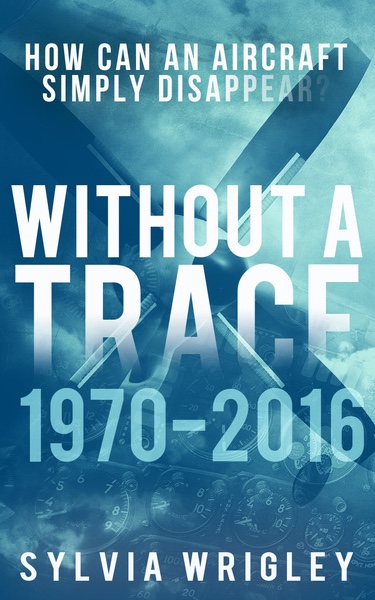
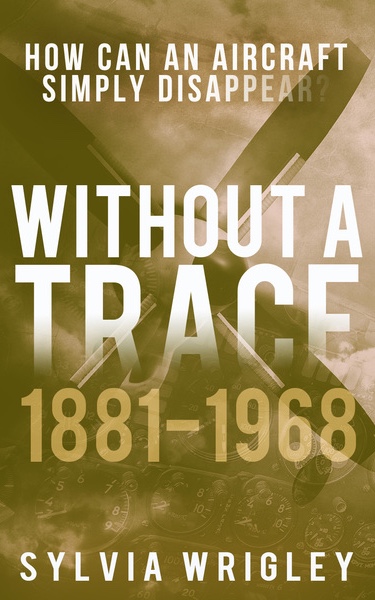
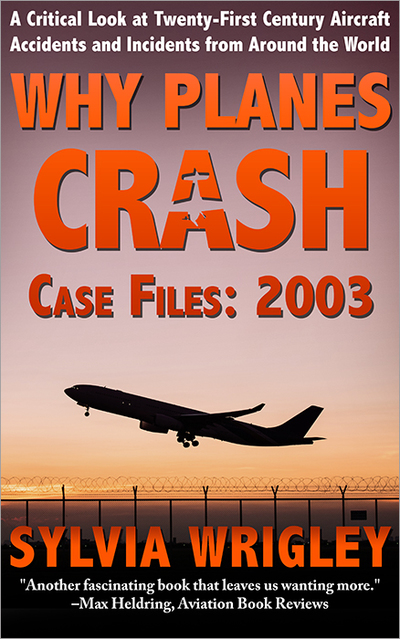
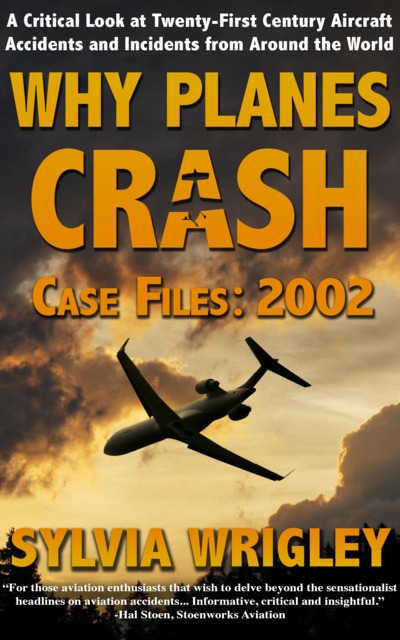
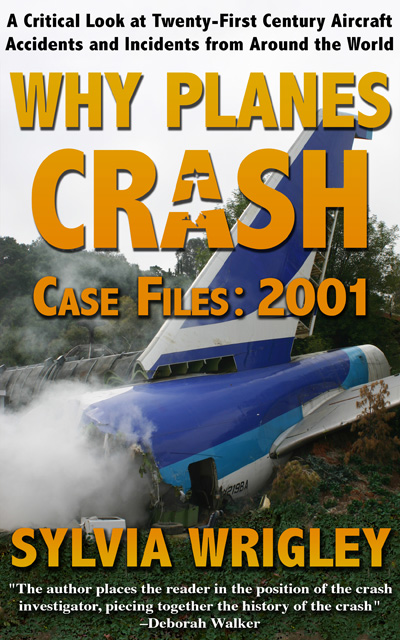

I would love to comment but I can’t get my eyes away from that photo.
Never knew a Piper Pawnee could create such an amount of wake turbulence. Must be very useful for spreading the fertilizer or whatever it is they spread from an ag-plane !
Isn’t it amazing? I’ve loved that photograph for a long time and was thrilled with the chance to get to use it. :D
Can you imagine an ATC clearance like:
“N121C cleared for take-off mind the wake turbulence of Piper Pawnee departing ahead of you”.
Mind, I’ve had funny ATC comments like:
“Citation 21C cleared to land no.9 in traffic”,
“21C can you slow down you are gaining on preceding Beech Bonanza ahead”,
“21C can you speed up again, C150 behind is gaining on you”.
Other day, other airport, even other continent:
“N121C maintain high speed”,
a bit later: “N121C reduce speed you are gaining on preceding Concorde”.
Only a Citation has such an amazing range of speed, even if a bit lacking in the top end (“Slowtation, Near Jet”)
I am just interested in the language for the oversight – there is a difference between failed and forgot. The easier description by far is forgot, failed maybe brings a more solemn seriousness to an incident, especially if you do not intend to repeat the experience. I hope my comments are not taken the wrong way I am not doing a critique on the pilot or the article. I would only offer one piece of action make the maker of the machine aware that the seat belt can result is this incident.
Jim,
You are making a very valid observation. John, the author of the article, describes an incident that just as easily could have ended tragically.
And yes, sometimes it takes just a small modification to prevent this from ever happening again.
One thing aviation has always held in it’s favour is the intrinsic notion that people involved, be they designers, operational staff or otherwise, must be presented with reports of incidents and learn from them.
Talking about pre-flight checks:
The SN601 Corvette was a small, French-built jet originally intended as a commuter aircraft. Not many were built although it was one of the best aircraft I have ever flown. But as the airframe was ahead of it’s time, the right engines were not available yet. By the time they were, the project had long been shelved.
Anyway, a pilot who shall remain nameless, had to taxi the aircraft to another parking. He decided to use only one engine. Quite OK but he only removed the covers from one engine and, you guess: He started the other one ! The canvas cover was shredded as it was sucked into the engine. Which of course did not do the engine any good, it was a write-off and had to go straight to the overhaul shop.
So even if you are not intending to get airborne, a walk-around is still a good idea, even perhaps a necessity.
What happened to me during my early career is equally a lesson:
I was working for a German company that did a lot of banner-towing. For that purpose they kept a fleet of more than 20 Piper Super Cubs, usually 21 were flying every day from April until the end of the season in September. Only the Sunday was free because banner towing was not allowed in Nordrhein-Westfalen. Perhaps that is the case in other German Federal States as well.
We had to report every day at 08:00. If the weather was below VFR limits (1500m. vis and cloud base at least 500 ft) we would have to wait in a room with a table and chairs and played cards until we either got the “go”, or were released and could go home.
We were in the smog-ridden Ruhr area and were paid according to a barograph that we carried and had to be re-sealed after the strip was removed and signed for authentication by the “Luftaufsicht”. They were doing ATC (in German) but otherwise were quite casual. Often the weather would be poor at the airport and immediate area, but could be fine outside the industrial smog area so we were very experienced flying in poor weather conditions.
Every pilot was assigned the same Piper, only exchanged if it had to undergo maintenance. So after landing in the evening – we had to be on the ground around 17:00 local – we refuelled and parked the aircraft. The company had steel cables anchored in the grass parking. We would attach lines from these cables to the tie-down rings on the wing and another one at the tow hook at the tail.
Activation of the flaps of the PA18 was by a simple handle which pulled them down for extension. They were held in the “up” position simply by a spring. It was not entirely unusual to see a Piper taxi to the holding point with one flap fully extended and the other one up.
During take-off the one hanging down would be blown into the correct position, totally harmless.
The gust lock was a wishbone that could be pulled out from under the instrument panel. The ends were attached to the airframe, where they joined was a ring which could be set over the control stick. Simple.
One day the weather was poor to start but as the front cleared we were called out. The wind had become strong and gusty. A light taildragger could be a handful, especially on the ground. With 17 others trying to get airborne as quickly as possible I did a very quick pre-flight. After all, I had been the last one to fly, fuel and park it and it had been quite OK then.
Cautiously I taxied to the runway and decided to do the take-off without flaps. A very careful control check, after all too much movement and the wind could catch the aircraft.and flip it over.
I got airborne all-right and when it became my turn to pick up I pulled one notch of flap. The aircraft instantly started banking.
Strange. I retracted the flaps, all okay again. In the condition of strong wind (around 25 kts is a lot for a PA18) I used only a little aileron.
Soon I discovered the cause: A flat strip of metal was lodged over the joint between aileron and flap on one side. The aircraft fuselage was burgundy red but the wings and tail white. So was the “V” shaped metal strip. Pulling the flaps also pulled the ailerons on that side with it.The result was an unwanted turn.
Red-faced I landed, fortunately without incident.
What had happened was: After the aircraft had been parked the company had received a warning from the “Wetterwarte”, the met office, that high winds were expected. Gusts from behind could cause the flaps to be well, flapping as all that held them was a spring.
So the mechanics quickly made strips out of metal and pushed them over the flaps and ailerons. They had no time to paint them in a contrasting colour nor did anyone think of warning the pilots.
When airborne one of the strips had “wriggled” itself free, the other was still in place to pull the aileron on that side down each time I selected flaps.
Of course, the pilot is supposed to do a walk-around. Fortunately apart from an embarrassment nothing else happened.
A heads up for many who could be caught out. My mind drifted to the loss of the nephew of JFK. His wife was late, 4hrs late, yet it seems while waiting he didn’t take the opportunity to do a thorough walk around. If the write up is accurate he chose to do the external check after his wife arrived late. Did he carry out enough of a check, running late, dropping of a friend while carrying on route to their own destination Martha’s Vineyard. All perished when crashing into the sea. Apart from a known strange decent and climb no other definitive cause was recorded. Maybe they should review the case!!!
Fair enough Jim, you are right in that the cause of the accident that unfortunately took the life of JFK jr. was never established with absolute certainty.
But the most likely explanation was a loss of orientation. If I remember the facts correctly, John was not instrument-rated and relatively inexperienced. He decided to fly at dusk, a time of day when the last rays of the setting sun can cause effects that may interfere with the senses. The aircraft flew into an area with some lights on the ground, reflections from the sea below. A classic set-up for vertigo. And I have already mentioned how I myself suffered from a sudden bout of vertigo when on a visual into Frankfurt (EDDF). What saved me that time was that I was reasonably experienced, instrument-rated and fully established on the ILS. So I instantly reverted to instruments and the vertigo disappeared.
In the 1980’s a Turbo Commander on a single-crew charter crashed when on a night flight, IFR,from Dublin (EIDW) to France.
The aircraft was not equipped with a FDR nor CVR, but from the radar read-out the investigators concluded that the pilot, at I believe FL 200, must have suffered vertigo when leaving the UK with it’s lights and open, dark sea coming up .
The most likely scenario was: The flight was single-crew on request of the charterer to put an extra passenger in the co-pilot seat, which at the time was quite legal. The passengers were a group of journalists. Witnesses who saw them board reported that they probably had a few drinks, judging from their behaviour. Nothing aggressive, just a bit boisterous. Speculating on the last minutes of the flight, it is thought that the pilot may have turned in his seat to tell them to be a bit less loud. The autopilot cut-out switch is located on the “ramshorn” control yoke. It does not trigger an alert when activated.
So, it is thought, as Jack was distracted the passenger in the right-hand seat accidentally touched the autopilot cut-out. This caused the aircraft to enter a descending spiral – as confirmed by the radar trace.
Jack (incidentally an experienced pilot with an excellent safety record), returning to the controls and confronted with a sudden and unexpected spiral dive, may have suffered vertigo. This would not have been helped by the sudden absence of visual cues due to the transition from flight over land to over sea. The weather was good, perhaps IMC might have been better.
Anyway, it has been established from the wreckage that in an effort to regain control and recover from the spiral, the pilot exceeded the structural limits of the aircraft. The wings parted from the fuselage, again confirmed by the last radar read-out showing a rate of descent in excess of 15000 fpm before the aircraft disintegrated and radar contact was lost.
If this can happen to an experienced, instrument-rated commercial pilot it is probable that a not so experienced PPL without IF rating, flying VFR at night from an area of darkness over sea into an area with confusing lights could likewise have been affected.
It is a matter of “Thank my good fortune (or, if you are religious thank the good Lord) that it did not happen to me”.